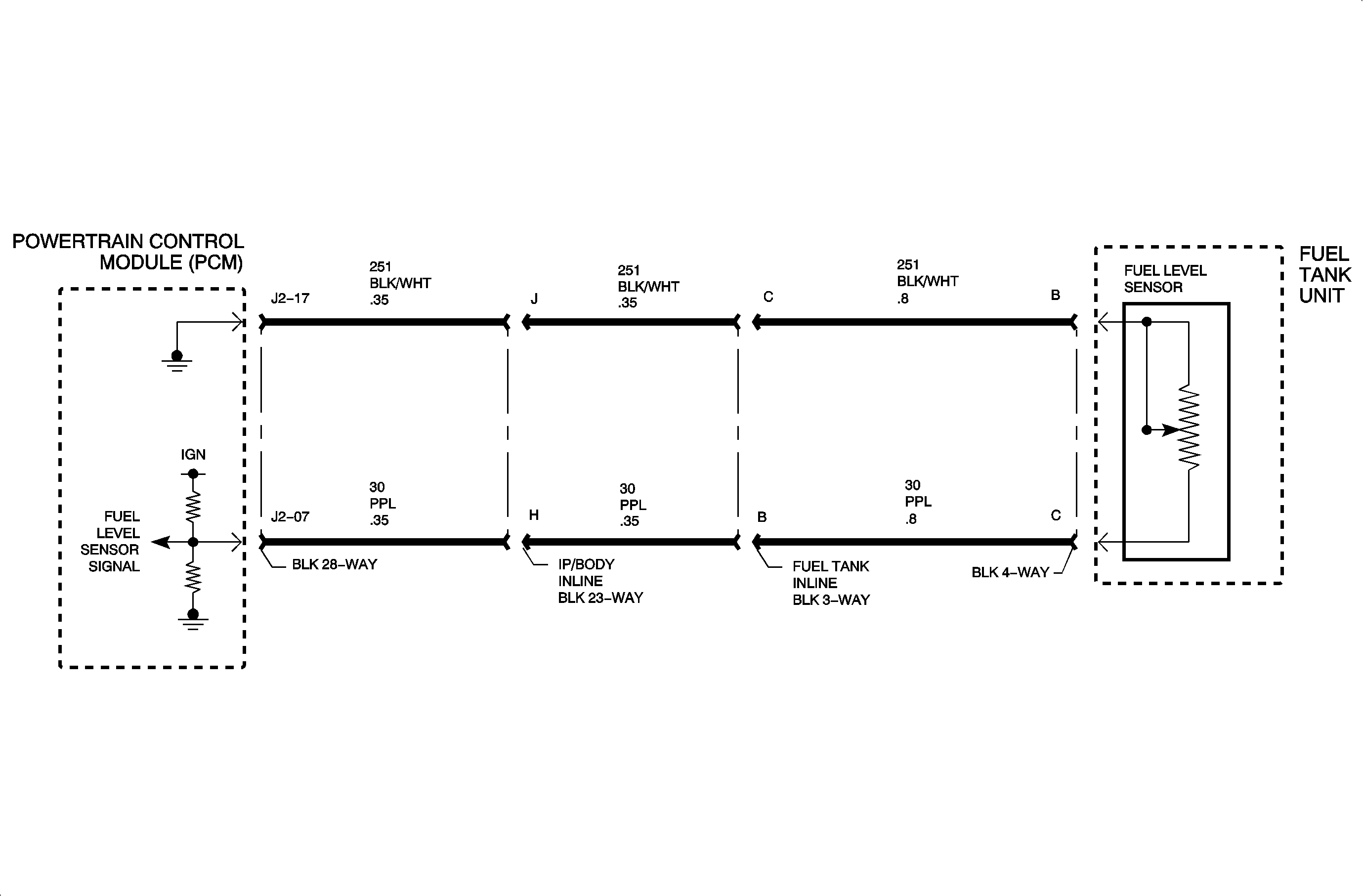
The fuel level sensor is a variable resistor that varies resistance according to changes in the level of fuel in the fuel tank. The PCM supplies ignition voltage reference through a series of pull-up resistors to the sensor, which is connected to ground. When the level in the fuel tank is high, the sensor resistance is high, low voltage on signal line. As the fuel level decreases, the sensor resistance decreases, voltage increases on the signal line. The powertrain control module (PCM) uses the signal voltage to determine fuel level. The PCM sends the fuel level over the class 2 link to the body control module (BCM). The BCM averages the signal over time then sends a message to the instrument panel (I/P) cluster over the link to position the gage. DTC P0461 sets when the fuel level sensor signal voltage at the PCM does not change a calibrated amount after the vehicle has been driven a long distance.
DTC Parameters
DTC P0461 will set if fuel level changes less than 2 percent (0.09 volts) when:
| • | The vehicle has been driven over 30 miles. |
| • | DTC P0462 or P0463 have not been set |
DTC P0461 diagnostic runs once per ignition cycle.
DTC P0461 is a type D DTC.
Diagnostic Aids
This DTC sets due a fuel level that is not changing over driving time.
Use a scan tool to monitor the FUEL LEVEL voltage while rocking vehicle back and forth. Voltage should change indicating a moving float.
Possible causes of static fuel level:
| • | The fuel sender float stuck or perforated |
| • | The fuel sender sweep arm stuck |
